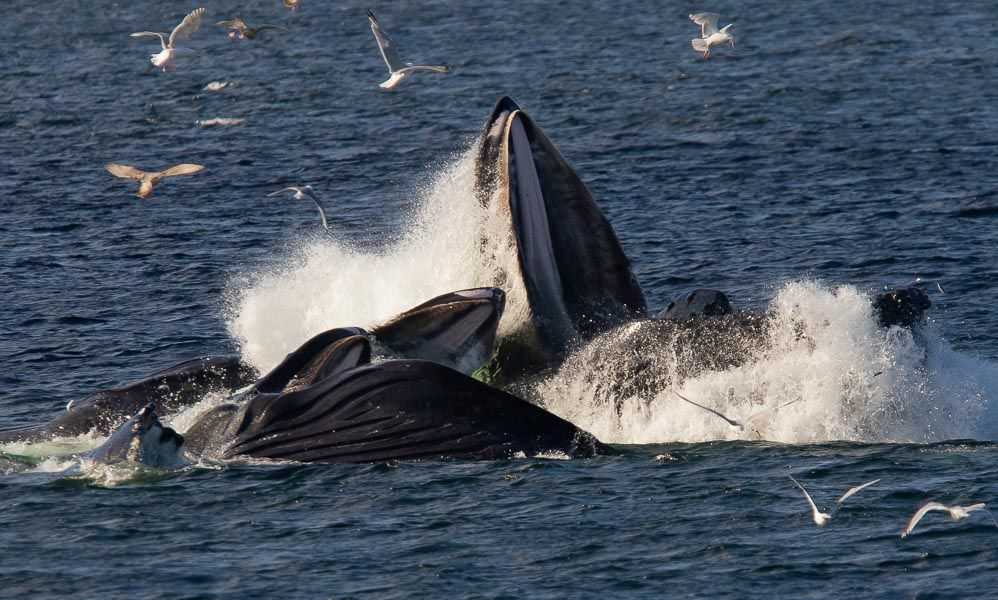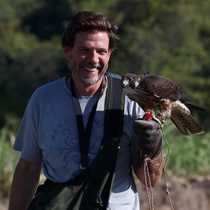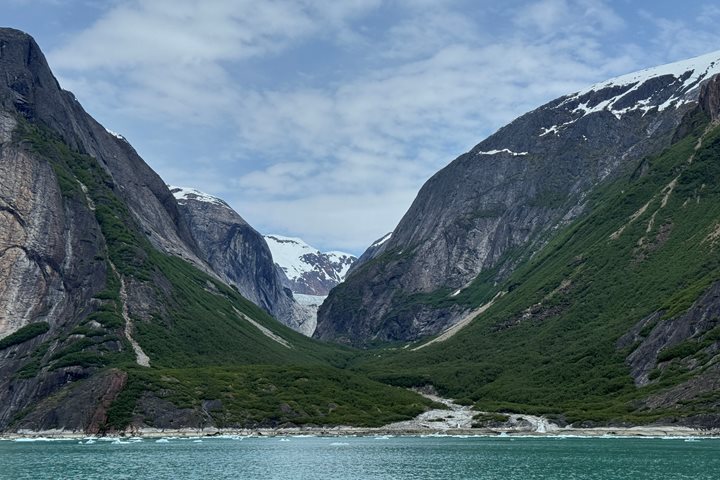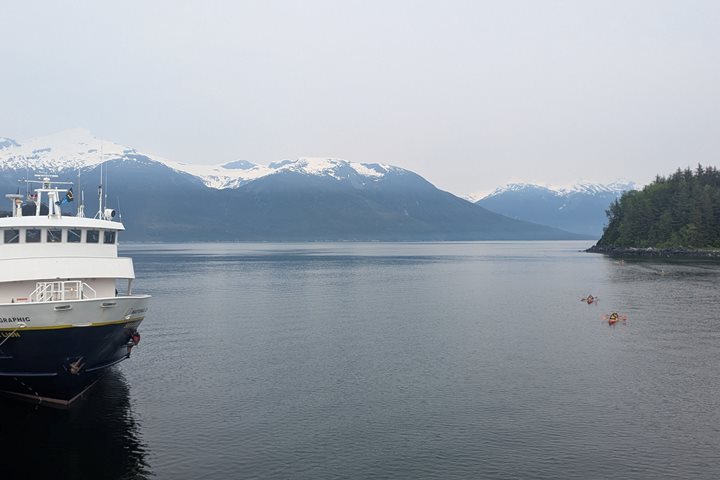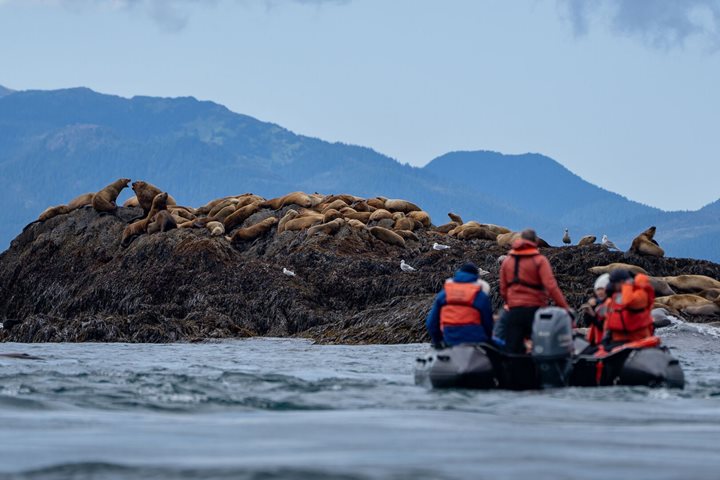National Geographic Sea Bird sailed through the night, through Peril Strait to wake up near Sitkoh Bay. This bay is located in Chichagof Island, and this is where we spent the morning exploring the temperate rainforest by foot. We also deployed the multi-colored kayaks to go for a paddle.
Our first experience in the Southeast Alaska’s temperate rainforest took place between different length hikes. We all walked through an old logging road surrounded by forest. We found dozens of banana slugs, and noticed there were individuals of different colors and patterns. Everyone seemed quite fascinated by the slimy, hermaphroditic decomposers of the forest floor. There are always amazing things to learn from these humble, and apparently simple, mollusks.
After enjoying our first experience in the forest, we sailed out of Sitkoh Bay into Chatham Strait. We enjoyed a sunny day with amazing views. Scanning the water’s surface, we could see some distant blows. As we approached, we realized there were two groups of humpback whales that were apparently feeding. Once we were closer, we confirmed what we had hoped we would find. We found not one, but two groups of cooperatively feeding bubble-netting whales! We spent over two hours watching and listening with the ship’s hydrophone to this amazing spectacle of nature.

